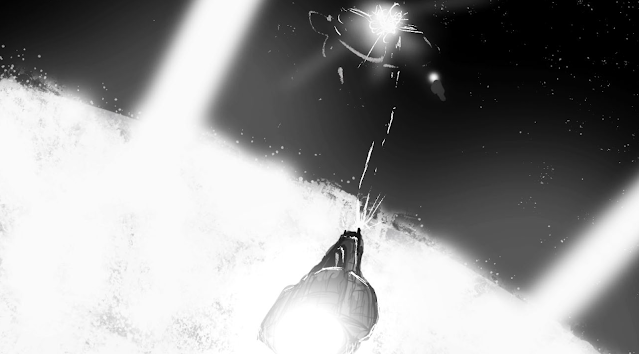Ecophony Rinne: A Story of Cosmic Germination, Death, and Reincarnation
Recently I went on a trip to Ubud, Indonesia, to look at a painting.
Specifically, this painting:
It is titled Kala Rau after the Hindu myth of the demon that swallows the moon, and was painted by Balinese artist Ketut Budiana.
And here’s me standing next to it, looking extremely wet, holding one of my favourite albums of all time:
The album
is called Ecophony Rinne, and it was created by Geinoh
Yamashirogumi, a Japanese musical and artistic collective, in 1994. It is
a masterpiece of experimental music, blending traditional Japanese instruments
and vocals with modern electronic elements to create a unique and captivating
sound.
Released
in 1986, Ecophony Rinne was the fourth album from Geinoh
Yamashirogumi, a Japanese musical collective that was founded in the 1970s by
composer and multi-instrumentalist Shoji Yamashiro. The group drew on a wide
range of musical traditions, including Japanese folk music, classical music,
and contemporary experimental music, to create a sound that was both
traditional and avant-garde. While Akira and Ecophony
Gaia had their flirtations with more modern music styles, Ecophony
Rinne remains firmly entrenched in its mystical journey through birth, life,
death and rebirth.
The
album's title, "Rinne," refers to the Buddhist concept of
rebirth and the cyclical nature of existence. This theme is reflected in the
album's music, which features complex rhythms, intricate melodies, and hypnotic
vocal harmonies that seem to ebb and flow like the tides of the ocean.
One of the
most striking aspects of Ecophony Rinne is the way
in which it blends traditional Japanese instruments, such as the shakuhachi
flute, koto, and taiko drums, with modern electronic elements, including
synthesizers and drum machines. The result is a sound that is both ancient and
futuristic, a sonic landscape that seems to transcend time and space.
The
album's opening track, "Shohmyoh," sets the tone for the rest
of the album, with its pulsing rhythms, soaring vocal harmonies, and haunting
flute melodies. The track builds slowly, layering in new elements and textures
as it progresses, until it reaches a climax of soaring beauty and intensity.
Other
standout tracks on the album include "Requiem," a haunting and
mournful piece that showcases the group's skill with vocal harmonies and
complex rhythms, and "Yama," a percussive and energetic track
that features a driving beat and intricate drum patterns.
The most
haunting piece, however, is the album’s final track, “Teinshou” –
“reincarnation”. The chaotic cacophony builds slowly, coming to a bone-shaking
crescendo that fills me with both dread and awe – only for it to fall away,
replaced by quiet and calm rhythms. We have passed through the vortex, and the
cycle begins anew.
Ecophony Rinne is a
challenging and complex album, but it is also incredibly rewarding for those who
are willing to take the time to explore its many layers and textures. It is a
testament to the power of music to transcend language, culture, and time, and
to connect us to something deeper and more profound than words can express.
Listen to
the album here.




Comments
Post a Comment